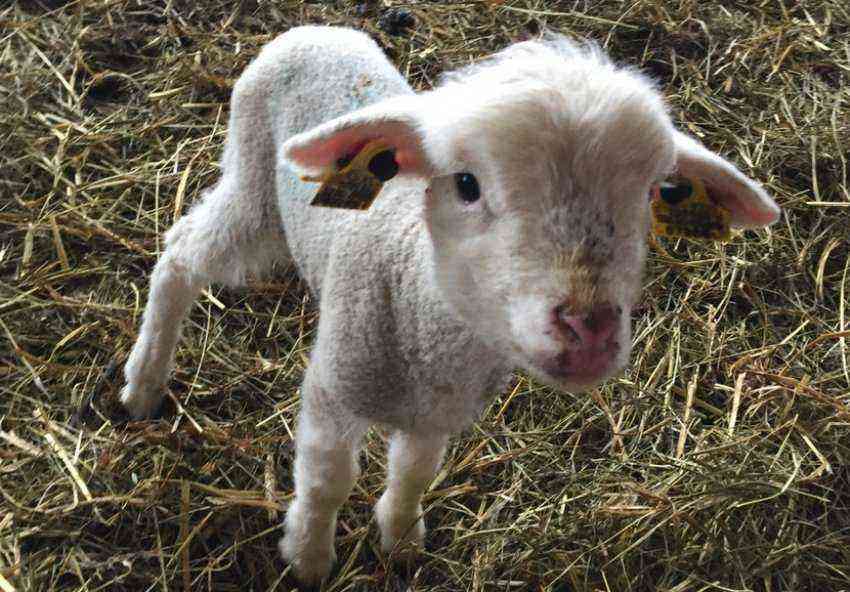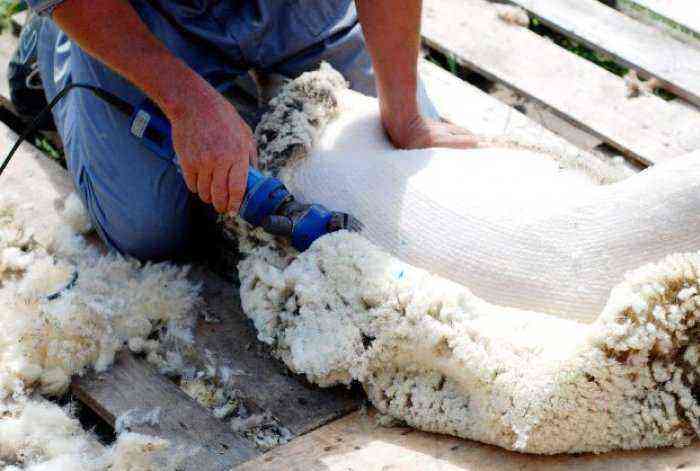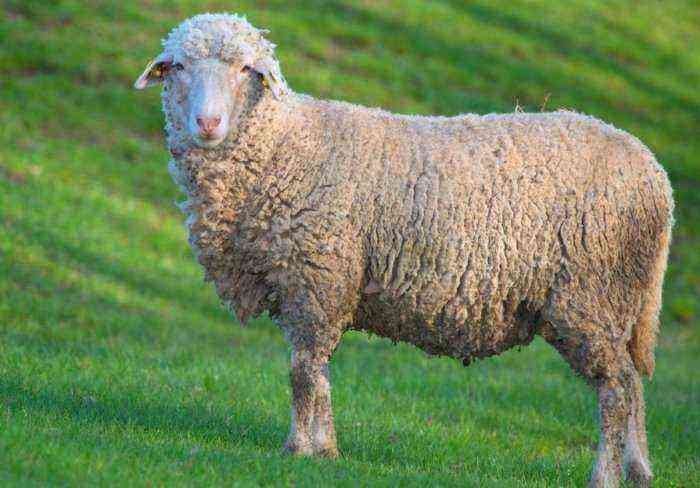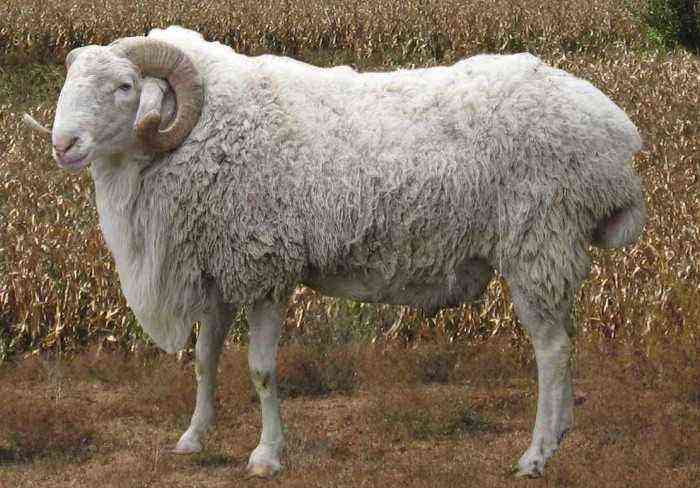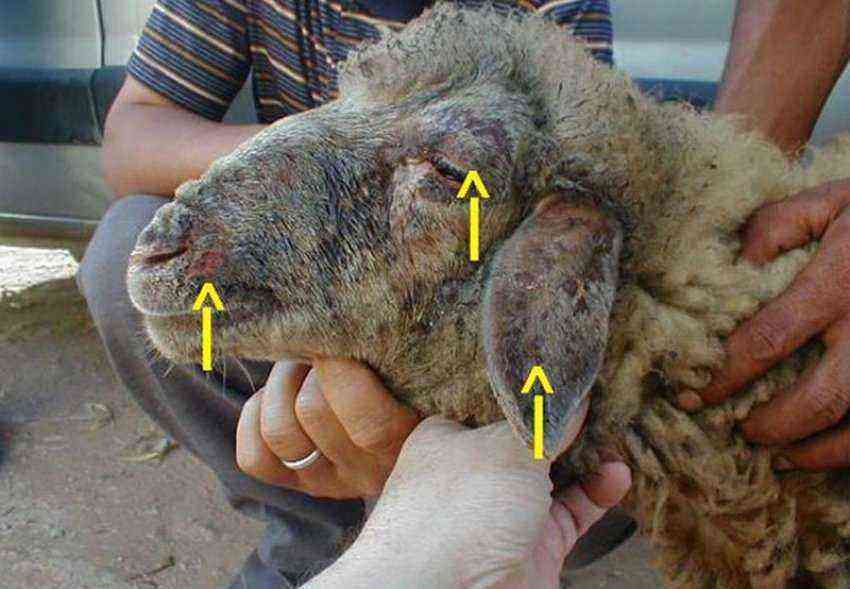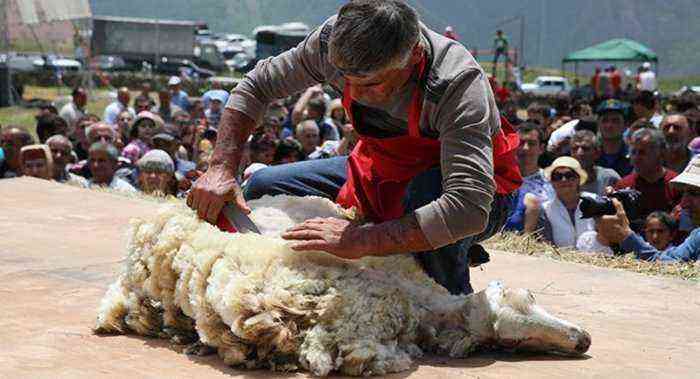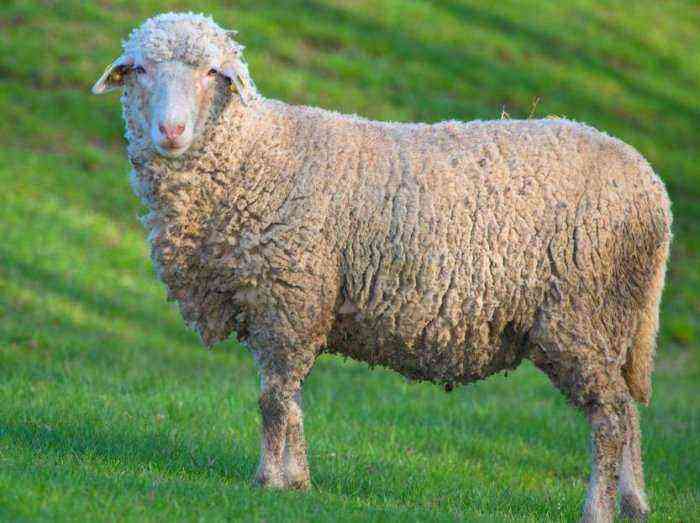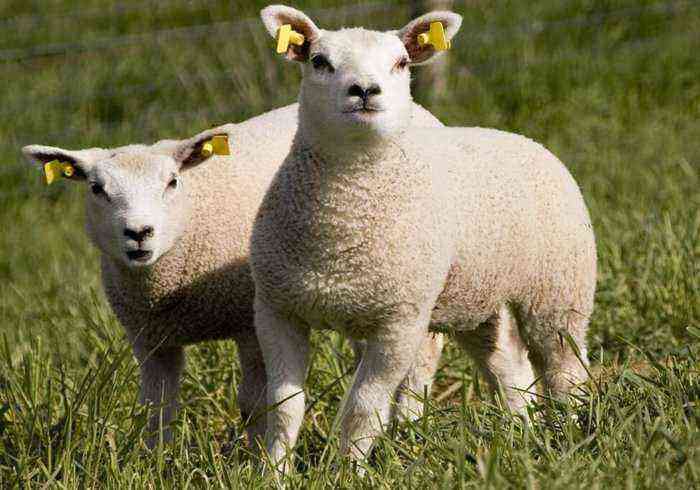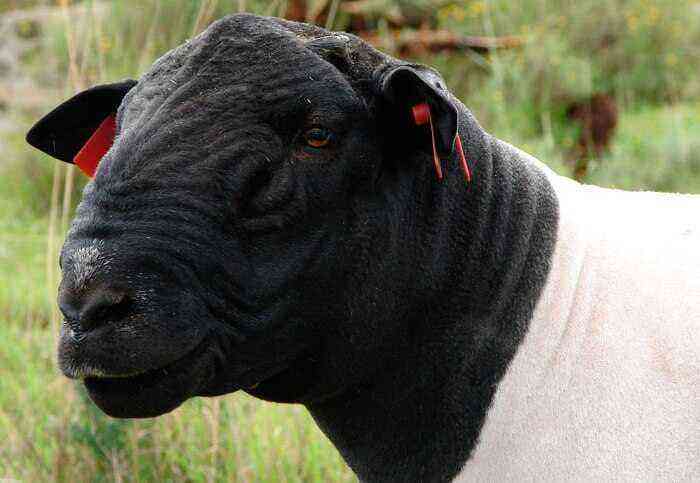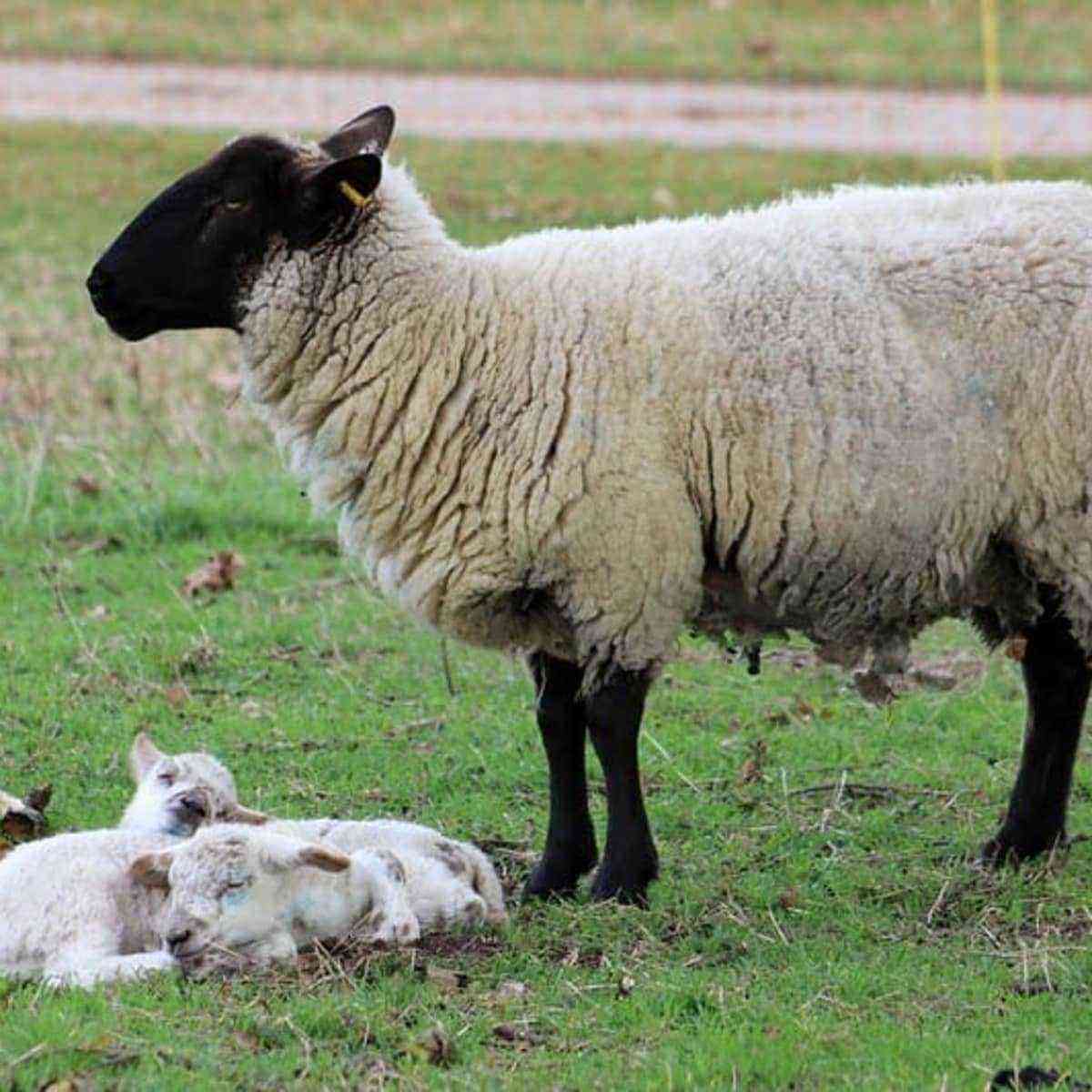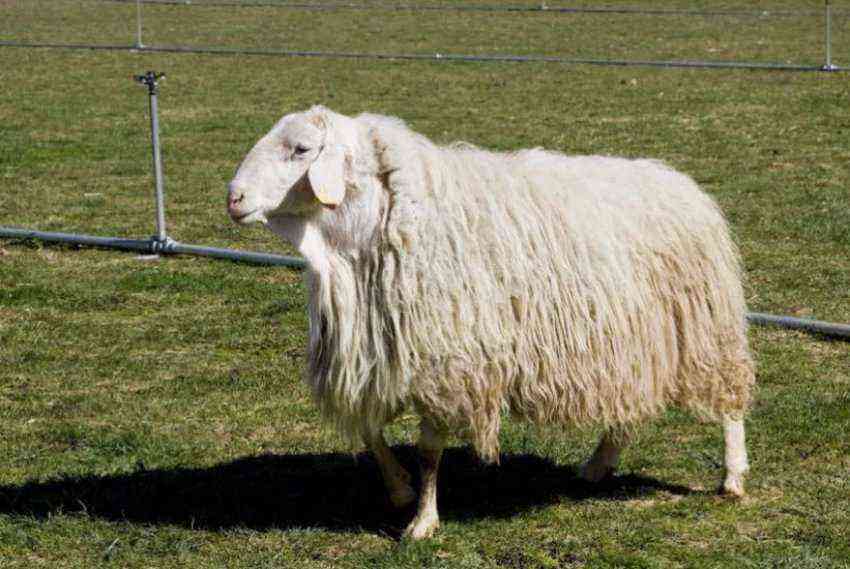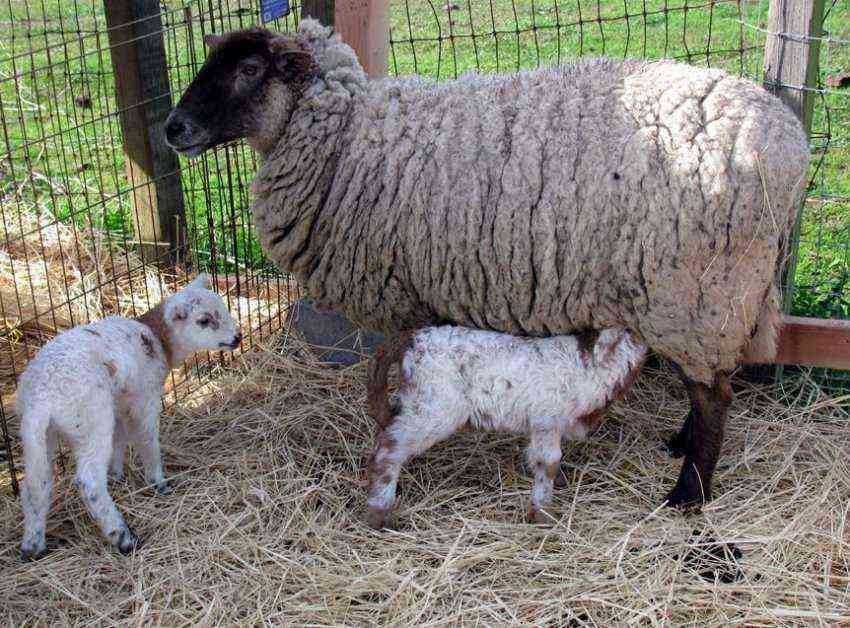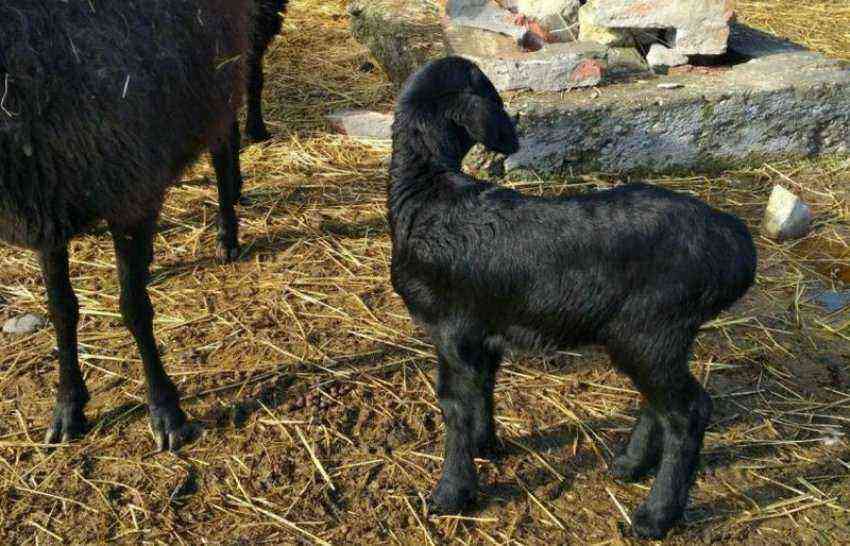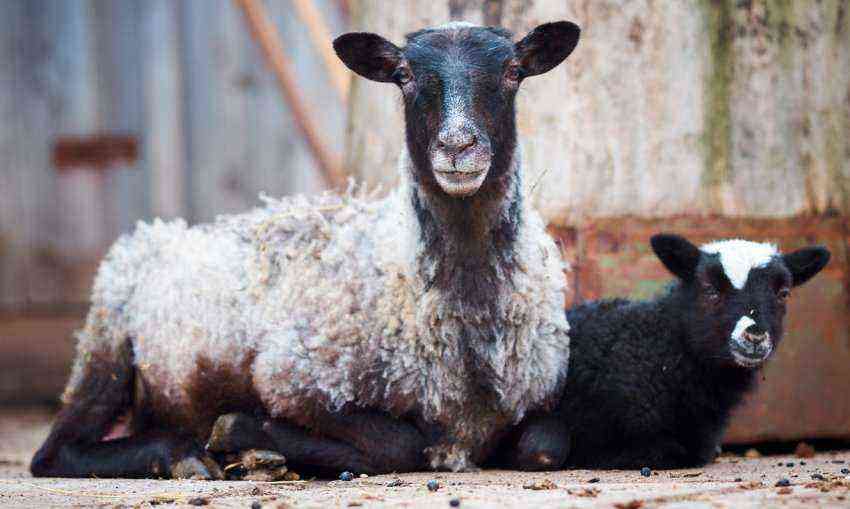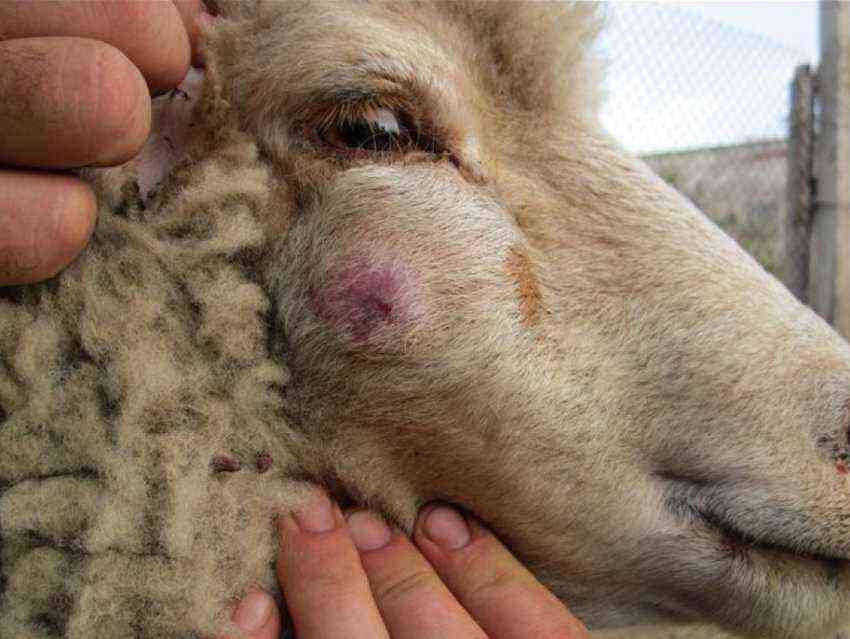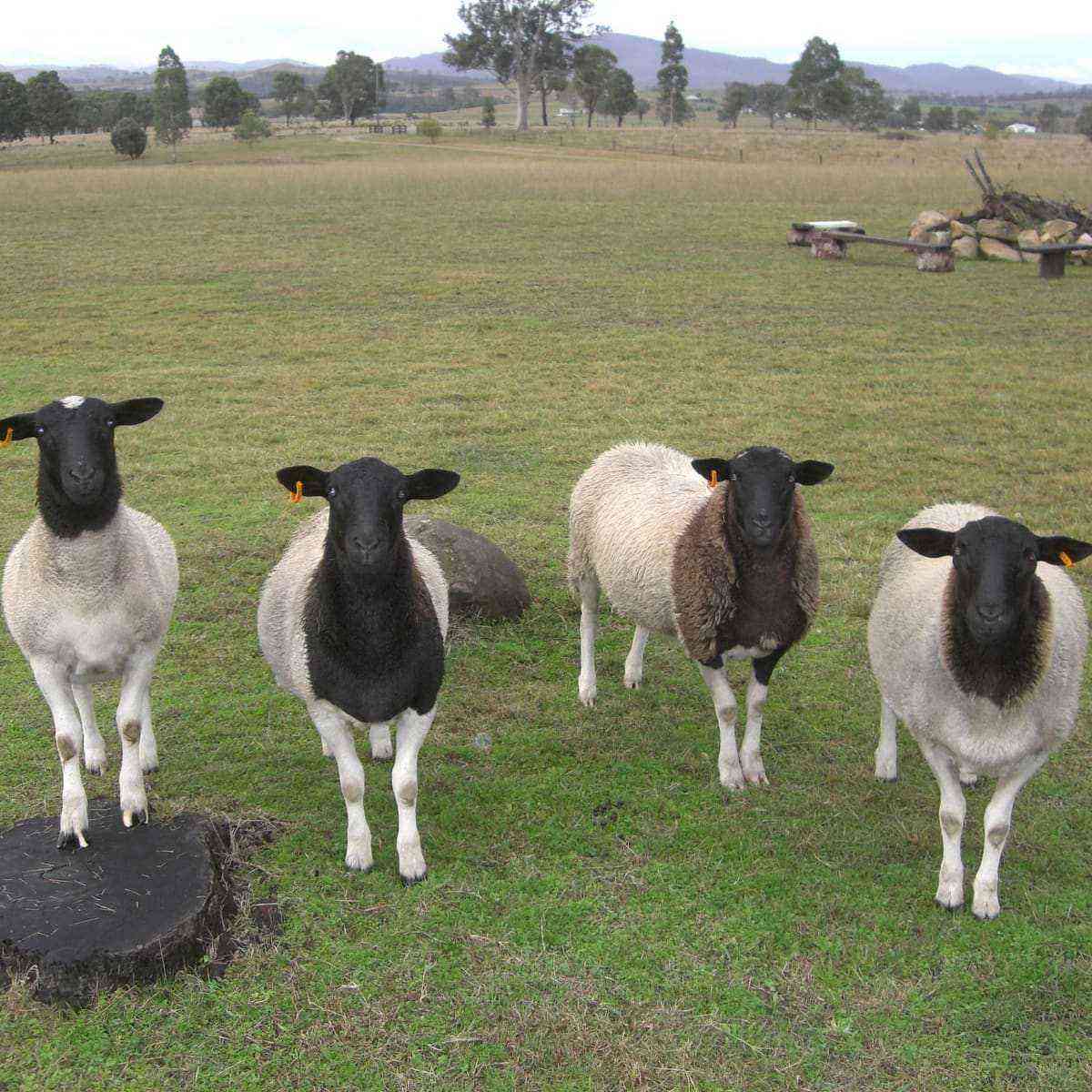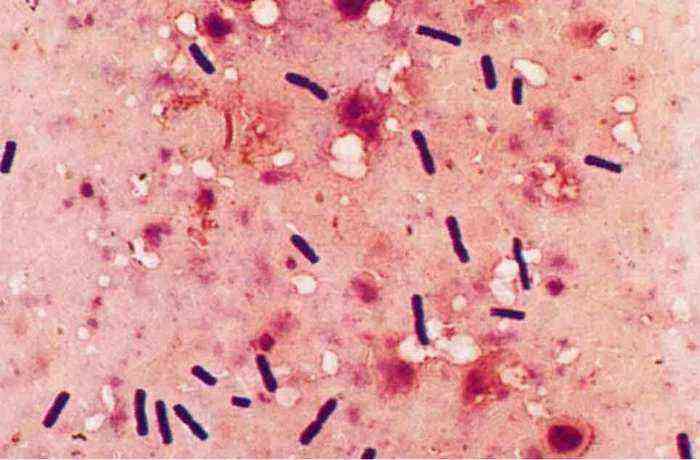Smallpox of sheep and goats is a disease of an infectious nature caused by a highly virulent virus, the nucleus of which contains a DNA molecule. The causative agent belongs to the genus of capripoxyviruses from the poxyvirus family. This disease is characterized by high fever and the appearance of a papular-pustular rash, which gradually changes. The article will tell you how smallpox infection occurs, how to treat sick animals and whether it is possible to protect livestock from the virus.
Smallpox in a sheep during the incubation period
History
Sheep pox, like a similar goat disease, has been known since ancient times. The first mention of them dates back to the 2nd century AD. Scientists believe that the virus entered Europe from central Asia. At the end of the 13th century, the first large-scale outbreak of smallpox was recorded in England. Later, in the middle of the 15th century, a similar thing happened in France.
Dr. Bourgelia in 1763 established that smallpox is contagious, and 14 years later, the scientists Dobanton and Thyssen were able to describe the disease in detail. In 1798, Dr. Gilbert formulated how smallpox develops in stages. The pathogen itself was described later and in 1903 by the researcher Borel.
Smallpox raged in Russia in the 18th and 19th centuries. Thanks to the creation of a formula vaccine based on aluminum hydroxide, by 1969 it was possible to bring the causative agent of the disease under control. Now outbreaks of smallpox sometimes occur in farms located in the border regions of Russia. In some African and Asian countries, epidemics of smallpox disease of farm animals are still recorded.
Smallpox causes enormous damage to farms, although the mortality rate from this disease is low. During the epidemic, a lot of money has to be spent not only on the treatment of animals, but also on the sanitization of pens, sheepfolds, and quarantine measures. Material losses are also associated with a decrease in productivity indicators.
Attention! Smallpox is classified as group A, which characterizes this disease as rapidly spreading.
Causative agent
The causative agent of sheep pox is a DNA-containing poxvirus. It is quite large and round in shape. The structure of virions is brick-shaped. The causative agent is unstable to elevated temperatures and simple disinfectants. When heated to more than 53 degrees, it dies in a quarter of an hour. However, at low temperatures, the smallpox virus can remain viable for up to 5 years.

DNA containing poxvirus
In the external environment, the pathogen remains alive and capable of reproduction for several months. For example, in the wool of sheep and other farm animals and on pastures, the poxyvirus remains viable for 2 months, and indoors its activity lasts up to six months.
Ways of transmission
Smallpox disease affects sheep of any age. Outbreaks of the disease are more often recorded in the autumn-winter period, when dampness prevails. In such conditions, the immune system of animals is weakened.
Attention! The severe course of the disease is characteristic of young animals and fine-fleeced sheep.
Healthy animals become infected from sick individuals and those that are in the incubation period. They release virions into the environment with mucus from the nose and mouth, as well as together with particles of the epithelium. Sheep that have had the disease also spread the virus. It is contained in their coat and gets into the litter, food and drinking water.
Ways of infection:
- straight;
- alimentary;
- aerogenic;
- through mother’s milk.
Attention! Other types of animals, as well as people, can contribute to the spread of infection.
Symptoms and course of the disease
After entering the body of a sheep, the virus begins to multiply, but the symptoms of the disease do not immediately appear. The incubation period can last from 3 to 14 days, depending on the degree of resistance of the immune system and the concentration of virions in the blood of the animal.
The first symptoms of smallpox are:
- Edema of the eyelids.
- Labored breathing. A characteristic wheezing is heard.
- Discharge from the nose. At first they are transparent, mucous, later – purulent.
- Depression, loss of appetite.
- Fever. The temperature rises to 41 degrees.
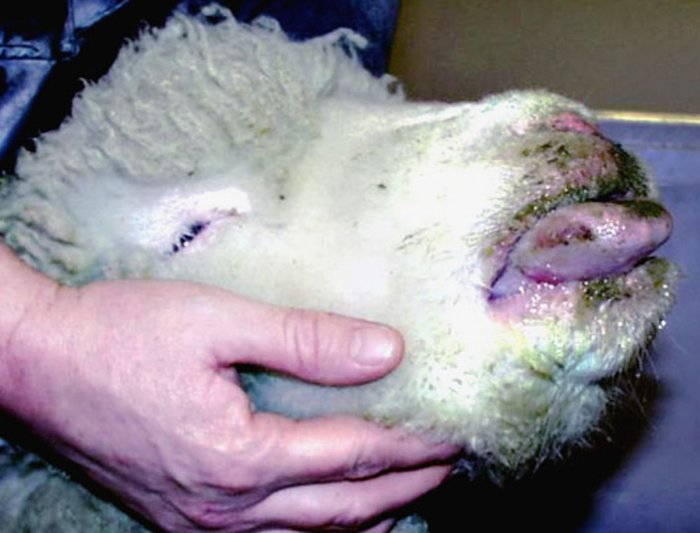
Signs of the disease
At this stage, which is called prodromal, the virus is in the blood of the animal, its duration is up to 3 days. Further, with the blood flow, the virions enter the epithelial cells. Now a pox rash can be seen on the sheep’s skin. It is localized in the upper part of the body – on the head (in the region of the eyelids, lips) or where the skin is the thinnest and most delicate: on the scrotum in males, on the udder in females, on the inside of the limbs.
Initially, pockmarks appear as rounded pink spots, and, characteristically, they have a depression in the center. They are called roseolas. Further development of the disease occurs in a certain sequence. The rash gradually changes, in connection with this, several stages of the disease are distinguished. Let’s consider them in detail:
- The appearance of roseola, which is mentioned above. This stage lasts 1-2 days.
- papular stage. Its duration is up to 3 days. Roseolas are converted into small dense conical nodules. Each of them is framed by a red border.
- vesicular stage. Papules are transformed into vesicles – capsules filled with a light liquid. At this stage, the general condition of the animal usually improves, and the temperature drops to normal values. Its duration is 5 days.
- Suppuration stage. Now the fluid contained in the vesicular nodules becomes cloudy, after which a purulent exudate forms instead. This transformation is associated with the accumulation of leukocytes inside the pockmarks. This stage lasts up to 3 days.
- Purulent nodules are opened, the contents come out. The pockmarks gradually dry out, and brown crusts form on their surface. Under them, the epithelium is gradually renewed, and the scabs are exfoliated. After 5-6 days, they completely disappear.
Attention! The appearance and transformation of smallpox in a clear sequence indicates the ability of the immune system to fight the virus.
In debilitated animals or lambs, complications may occur due to a viral infection. In this case, in addition to the listed symptoms, you can notice signs of damage to the organs of the respiratory or digestive system:
- cough;
- dyspnea;
- diarrhea.
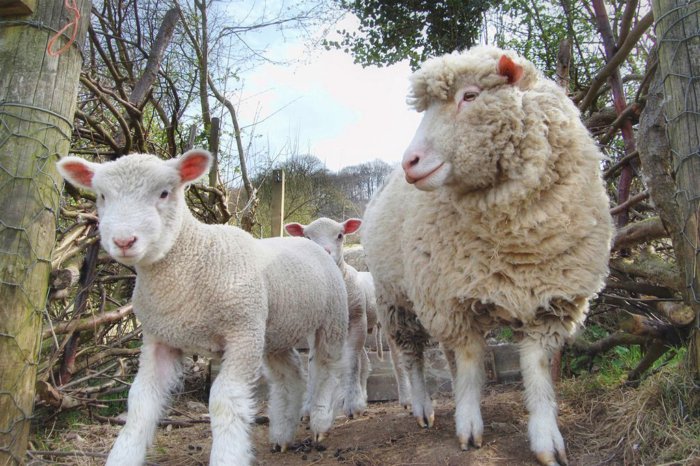
Weaned lambs get sick more
In lambs recently weaned, the disease can be severe and cause sepsis. The beginning of the pathological process is evidenced by the fusion of smallpox foci into large purulent formations. In this case, the prognosis is unfavorable: almost 50% of the lambs die.
Treatment and prevention
Special measures to combat the smallpox virus have not yet been developed. Infected animals are immediately isolated from the livestock, placed in a dry and warm place. They are given complete rest. Since the virus also affects the internal organs, sick sheep are offered easily digestible food: liquid mash, chopped vegetables. Clean drinking water must be available at all times.
Animals are treated symptomatically with:
- antipyretic drugs;
- vitamins to strengthen the immune system;
- cephalosporin antibiotics are used to prevent the development of complications.
Attention! In animals that have undergone the disease, a stable immunity to the smallpox virus is formed. In most cases, it persists for life.
Specific preventive measures include vaccination of livestock against smallpox. When there is a threat of the spread of infection, all animals are vaccinated. Mandatory vaccination of livestock is carried out on farms where outbreaks of smallpox have already been recorded. For three years, all animals are vaccinated in such farms every year. After the introduction of the vaccine against the smallpox virus, immunity is formed for up to a year.

Smallpox vaccination
Non-specific preventive measures include:
- introduction of a ban on the import into the territory of the farm of animals, household equipment and feed from points declared unfavorable for smallpox;
- maintaining cleanliness and compliance with sanitary standards in sheepfolds, paddocks, walking areas and pastures;
- mandatory quarantine of sheep arriving at the farm for up to 30 days;
- ensuring regular veterinary control over the flock;
- assigning service personnel, grazing areas and haul routes to sheep.
By following all the instructions, in most cases, the farmer can protect livestock from the smallpox virus.
Methods of struggle
If the infection nevertheless penetrated the farm and hit the sheep, quarantine is declared on the farm. From now on it is forbidden:
- regroup animals within the farm;
- export from the farm and import into its territory sheep and other animals;
- take out sick individuals to a pasture or watering place and allow them to stay with healthy ones;
- shear sheep;
- take inventory, feed and hay outside the farm;
- use sheep’s milk if it has not been heat treated;
- visiting a dysfunctional farm for people who are not engaged in its maintenance;
- sell sheep, meat and organize bazaars and other crowded events in the territory where quarantine has been declared.
As soon as at least 1 case of smallpox is registered on the farm, the veterinary supervision takes into account all the animals kept there. Every 10 days the entire flock is examined by a worker of the veterinary service. Healthy sheep are immediately vaccinated with smallpox vaccine, and sick ones are treated. The vaccinated sheep are monitored. If, after vaccination, they develop a disease, they are transferred to an isolation ward.
The premises are cleaned and disinfected every time a case of sheep death is recorded. For this, solutions are used:
- caustic soda at a concentration of 2%;
- sulfuric carbolic mixture (3%);
- freshly slaked lime (20%);
- formaldehyde (2%).

Sodium hydroxide
Wooden inventory, as well as fences and other items, are subject to processing with a freshly prepared raster of bleach (quicklime).
Attention! If ticks are found in the sheepfolds, it is necessary to take measures to destroy the pests, since they are also carriers of the infection.
Quarantine can be lifted 20 days after the recovery or death of the last animal infected with smallpox. An important condition for lifting restrictions is control disinfection on the farm. All inventory, service personnel clothing and footwear are subject to disinfection treatment. At the end of the working day, farm employees put their clothes and shoes in a steam-formalin chamber for disinfection, and wash themselves with hot water.
All newly arrived sheep and rams after the quarantine is lifted are vaccinated against smallpox. In the future, all sheep are vaccinated on the farm annually for 3 years. Feed that was on the farm at the time of the outbreak can be used to feed animals that have had smallpox or been vaccinated against it.
Although the mortality rate from sheep pox is low, this disease causes enormous damage to the farm. Livestock vaccination is the only effective measure to protect against the virus. Do not neglect it in order to save money, because if the infection spreads, the losses will be much higher.
